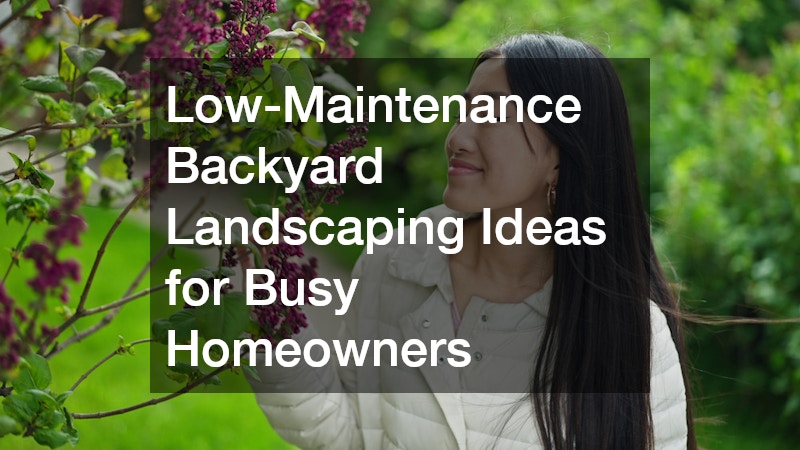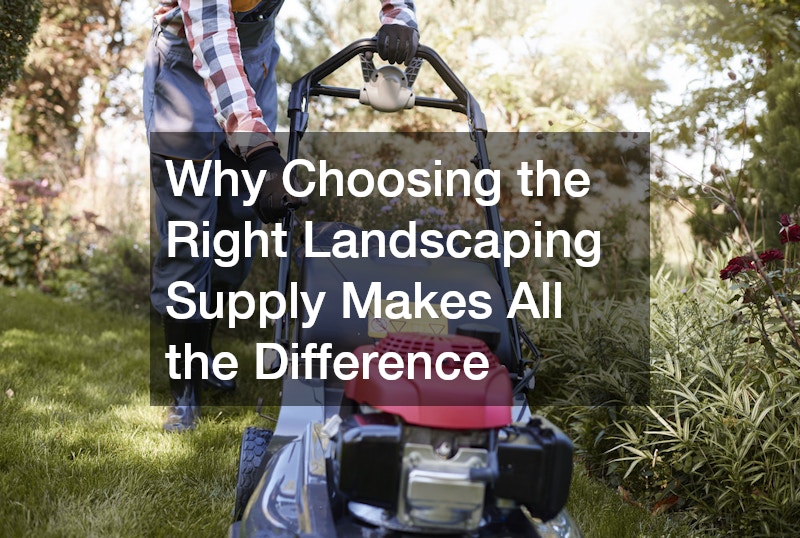Creating an inviting and functional outdoor space can significantly enhance your home’s appeal and value. Professional landscaping services play a crucial role in transforming these areas by integrating both aesthetic and practical elements. One such element that has gained popularity is the use of brown gravel in landscape design, which can add texture and a natural appearance to any outdoor setting.
Brown gravel for landscaping is versatile and complements a variety of styles, from modern minimalist gardens to rustic, nature-inspired retreats. Beyond improving visual appeal, it offers practical benefits such as reducing erosion and facilitating rainwater filtration. Integrating professional landscaping services ensures that such materials are used effectively to add value to your property.
In this article, we delve into the ultimate benefits of choosing professional landscaping services, explore why brown gravel is a popular choice, and further guide you through the process of incorporating it into your landscape design. We’ll also discuss the costs, trends, and environmental benefits associated with this landscaping feature.
1. Why Choose Professional Landscaping Services?
Professional landscaping services provide expertise and creativity that can elevate the functionality and beauty of your outdoor space. These services assess your yard’s unique characteristics and offer tailored solutions that enhance the property’s overall appeal. With expert guidance, you can better utilize materials like brown gravel for landscaping to achieve a harmonious design.
Choosing a professional landscaping service means investing in quality workmanship and design ingenuity. Landscapers have access to the best materials and can source brown gravel for landscaping from reputable suppliers, ensuring longevity and visual appeal. They also understand environmental aspects such as drainage and plant selection, enhancing the sustainability of your outdoor space.
Moreover, professionals save you time and effort. Instead of spending weekends laboring on your yard, you can rely on experts to efficiently transform your space. A well-landscaped yard not only beautifies your home but could significantly increase its market value as well.
2. What is Brown Gravel, and Why is it Popular in Landscaping?
Brown gravel for landscaping is a versatile material that can be used for pathways, borders, and gardens to provide texture and color. Its natural earth tones seamlessly blend with a variety of plants and other landscape features, making it a sought-after choice for landscape designers. Additionally, its durable nature withstands weathering, ensuring a long-term aesthetic appeal.
Apart from aesthetics, brown gravel serves important functional roles. It aids in filtration water treatment by facilitating groundwater recharge and minimizing surface runoff. Improving drainage helps in controlling erosion and protecting plant roots, making it an eco-friendly choice for sustainable landscaping.
The popularity of brown gravel can also be attributed to its low maintenance requirements. Unlike other organic mulch materials, it does not decompose, reducing the need for frequent replacements. This trait, combined with its natural look, makes it an attractive and practical option for homeowners seeking easy upkeep.
3. How to Incorporate Brown Gravel in Your Landscape Design?
Integrating brown gravel into your landscape design allows for creativity and customization. Consider using it to define walkways or driveways, where it can offer a contrasting backdrop against lush greenery or brightly colored plants. Using hydroseeding techniques alongside brown gravel can provide a vibrant base layer of grass or flowers, creating a cohesive look.
Another way to incorporate brown gravel for landscaping is by using it in plant beds to contrast with colorful flowers or foliage. This can highlight plant groupings while suppressing weed growth. It can also be used as a mulch alternative, providing a tidy appearance over soil without the need for annual replacement, saving both time and resources.
Moreover, brown gravel can visually unify your outdoor space. By consistently using it across various areas, such as under a crafted wooden porch or along a garden path, the material links different sections of your yard into a well-coordinated landscape that’s visually appealing and practical.
4. What are the Costs Involved with Professional Landscaping?
The cost of professional landscaping varies depending on the scope of the project, the size of the area, and the materials used. Brown gravel for landscaping is often priced by the ton, but integrating it into a comprehensive landscaping design can incur additional costs. Hiring a skilled landscaper to design and implement your vision is a worthwhile investment that pays off in increased home value.
Consider the inclusion of elements such as a wooden porch or lined walkways, which require both materials and labor. These features add to the initial cost but can greatly enhance the functionality and beauty of the space. Landscapers can help determine the most cost-effective solutions that align with your budget while maximizing curb appeal.
Also, by choosing a reputable landscaping service, you benefit from professional project management, which ensures that installations like fire sprinkler system designers for outdoor fire pits or irrigation systems are properly integrated. This guarantees the longevity and safety of your landscape, justifying the overall expenditure.
5. How to Select the Right Landscaping Service?
Selecting the right landscaping service is crucial for achieving the desired outcome for your outdoor project. Begin by researching local companies, looking for those with strong reputations for quality work and customer satisfaction. Seek referrals from friends or neighbors who have successfully implemented brown gravel for landscaping into their designs.
Inquire about the landscaper’s experience and specialties. Some companies may excel in hardscaping, such as creating stone paths or installing features like wooden porches, while others may offer expertise in eco-friendly designs incorporating natural elements like brown gravel. Look for a team that matches your specific needs.
Additionally, ensure your chosen landscaper provides comprehensive services, such as local tree pruning services and ongoing maintenance. This ensures that the company understands the local environment and can address any issues that arise, maintaining your landscape’s beauty year-round.
6. Which Landscape Design Trends Utilize Gravel?
Gravel, particularly brown gravel for landscaping, is increasingly featured in contemporary landscape design trends. Its versatility complements minimalist aesthetics, where clean lines and natural textures are favored. Gravel pathways and patios are common in modern gardens, offering sustainability and low maintenance.
Rustic and naturalistic garden designs also utilize brown gravel to create an authentic, organic feel. It is used extensively in features like rock gardens or dry riverbeds, where its color can mimic natural earth tones. Incorporating such elements with complementary features designed by a fire sprinkler system designer can add functionality and style.
Japanese Zen gardens often use gravel to emulate water, adding tranquility and simplicity to outdoor spaces. Using brown gravel in these stylized landscapes can enhance the calming atmosphere of a garden, fostering both beauty and serenity in your outdoor environment.
7. How Does Landscaping Improve Property Value?
Investing in quality landscaping positively affects property value by enhancing the visual appeal and functionality of your home. A well-designed landscape creates a positive first impression and invites potential buyers to explore further. Using elements like brown gravel for landscaping can make a yard visually striking without requiring heavy maintenance.
Landscaping also offers economic benefits. By utilizing materials like brown gravel and maintaining gardens with effective irrigation solutions—sometimes even supported by well drillers to install private water sources—you reduce water usage and minimize costs over time. This is an attractive selling point for eco-conscious buyers or homeowners looking to decrease utility expenses.
Moreover, the inclusion of amenities such as a wooden porch or designated outdoor seating areas can further increase property value by expanding usable living space. These features allow a seamless transition between indoor and outdoor living, appealing to a wide range of buyers and enhancing the marketability of your home.
8. What Maintenance is Required for Gravel Landscaping?
While brown gravel for landscaping is low maintenance compared to other materials, it still requires periodic care to maintain its appearance. Over time, gravel can shift due to weather or traffic, necessitating occasional raking to evenly distribute the stones. Adding new gravel periodically ensures the appearance remains fresh and full.
Regularly clearing debris like leaves or twigs from gravel areas is recommended to prevent weed growth. Additionally, installing a weed barrier beneath gravel can further reduce unwanted plant life while maintaining a neat look. Maintaining proper drainage through local water well pump repairs can enhance plant health and reduce water pooling.
Furthermore, sealed edges are vital for maintaining clear boundaries between gravel and lawn or planting areas. These can be achieved with stone or metal edging, helping to delineate spaces and keep gravel in place, thus maintaining the orderly, aesthetic appeal of your landscape.
9. Can Landscaping with Gravel Help the Environment?
Sustainable landscaping practices often incorporate brown gravel for its environmental benefits. Gravel-covered surfaces facilitate better rainwater absorption into the ground, reducing runoff and lowering the risk of erosion. This efficient drainage system helps replenish groundwater levels, aligning with practices in filtration water treatment.
Using gravel in place of impervious surfaces like concrete reduces the heat island effect, as gravel does not retain heat like paved surfaces. This can contribute to cooler ambient temperatures in and around your garden, supporting a healthier ecosystem for adjacent plant and animal life.
Gravel landscaping presents a compelling alternative to traditional grass lawns, particularly for homeowners seeking to minimize their environmental impact and reduce ongoing maintenance efforts. Unlike the constant demands of a turfgrass lawn – including regular mowing, fertilization, and pest control – gravel landscapes require considerably less attention. This translates to a significant reduction in the use of chemical fertilizers and pesticides, mitigating potential harm to local ecosystems and water sources. Furthermore, gravel’s inherent nature as a non-living ground cover drastically decreases the need for supplemental irrigation, a crucial advantage in regions facing water scarcity or where water conservation is a priority. By opting for gravel, homeowners actively contribute to the preservation of precious water resources and lessen their reliance on potentially harmful chemical treatments.
To ensure that landscaping choices harmonize with responsible water management, consulting with professionals is highly recommended. An environmentally-conscious plumber can provide valuable insights into water-efficient irrigation options for any accompanying plant life within the gravel landscape, as well as advise on proper drainage to prevent water accumulation. Similarly, a local water damage contractor possesses expertise in assessing property drainage and can identify potential issues that might arise from changes in landscaping. Engaging with these professionals empowers homeowners to make informed decisions that not only enhance the aesthetic appeal of their property but also actively support sustainable water use and minimize the risk of water-related problems. This proactive approach ensures long-term environmental benefits and contributes to a more resilient and eco-friendly landscape.
10. How to Balance Functionality and Style in Landscaping?
Achieving a balance between functionality and style in landscaping involves deliberate design choices and an understanding of how materials like brown gravel can enhance both aesthetics and practicality. Incorporating multifunctional elements, such as brown gravel pathways can provide durable surfaces while guiding movement and flow through the garden.
Integrating features like a wooden porch or covered seating area can enhance usability, offering spaces for relaxation and entertaining guests. Assessing the yard’s layout and identifying high-traffic areas can guide where to use durable, low-maintenance features and materials like gravel for optimal practicality.
Creating an outdoor living space that seamlessly blends aesthetic appeal with everyday functionality requires careful consideration and a collaborative approach. Working in tandem with seasoned designers and contractors, including specialists such as local water damage contractors when relevant, is crucial to ensure that the envisioned aesthetic goals are grounded in practical and sustainable solutions. This collaborative process allows for a holistic understanding of the space, taking into account factors like drainage, sunlight exposure, and the surrounding environment. Thoughtful plant selection plays a pivotal role in defining the character of the outdoor area, with consideration given to seasonal changes, maintenance requirements, and their contribution to the overall ambiance. Harmonious color palettes, extending from hardscaping materials to furniture and accessories, create a sense of visual unity and tranquility. Moreover, the cohesive integration of various design elements, such as lighting, pathways, and focal points, contributes to a well-orchestrated and inviting outdoor environment. Ultimately, the aim is to craft an outdoor space that not only captivates visually but also serves as a functional extension of the home, enhancing the quality of everyday living through its thoughtful design and enduring practicality.
Engaging a professional landscaping service offers numerous advantages, from expertly integrating elements like brown gravel to enhancing property value and eco-friendliness. The versatility of brown gravel in accommodating various landscape designs, alongside its practical benefits, makes it an enduring choice for homeowners seeking sophistication and simplicity in their outdoor spaces. Ultimately, integrating professional insight with quality materials results in a well-maintained landscape that provides long-term value and enjoyment.




